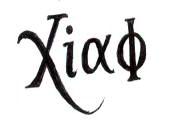The Noli Me Tangere cancer
The Manila Times, Walking History Column
March 17, 2018
MICHAEL “XIAO” CHUA
WHEN I was young, I found my mother’s old copy of a book entitled The Social Cancer. When I opened it, I was surprised that it was actually an English translation of José Rizal’s Noli Me Tangere by Charles Derbyshire, published in 1912. It used to be a very popular translation until perhaps the more modern rendering by María Soledad Lacson-Locsin published by Bookmark in the year of the centenary of Rizal’s martyrdom, 1996.
I often wondered why Derbyshire translated the title that way rather than using the actual Latin name of the novel which meant “Touch Me Not.” Noli Me Tangere, in ecclesiastical Latin, should be pronounced as “noli me tan-je-re.”
Rizal actually explained himself where he got the title in a letter to Félix Resurrección Hidalgo dated March 1887:
“Noli me tángere, words taken from the Gospel of St. Luke, means: do not touch me at all. The book therefore contains things that no one in our land has ever until the present time spoken of because they are so delicate that they did not consent at all to being touched by anyone. I myself have tried to do what no one has wanted to. I felt obliged to answer the calumnies that have been heaped over us and our country for centuries: I’ve described our social situation, our lives, our beliefs, our hopes, our desires, our grievances, our sorrows.”
As Ambeth Ocampo said, it doesn’t mean Rizal was always right. Everyone makes mistakes. The quote is actually from John 20:17.
And given Rizal’s explanation, it still not easy to connect the dots and make sense of it all. What was Rizal referring to that should not be touched? Until one reads Rizal dedication, which is often neglected when one discusses the novel. This dedication is most important because it clearly identifies to the readers—namely “A mi Patria,” “To my Mother Country” (ironically, the novel is written in Spanish, a language not understood by many of his countrymen in the Philippines. Was he talking about Mother Spain? His actual target audience were the Spaniards whom he was pleading to reform Filipinas, but maybe he was really thinking of the Filipino People)—that the “delicate things,” “calumnies,” were the CANCER of society. That is what Derbyshire was referring to in the title of his translation:
“Recorded in the history of human suffering are cancers of such malignant character that even minor contact aggravates them, engendering overwhelming pain…. Therefore, because I desire your good health… I will do with you what the ancients did with their infirmed: they placed them on the steps of their temples so that each in his own way could invoke a divinity that might offer a cure.” (Translated by Harold Augenbraum)
A few years back, someone told me that the phrase “Noli Me Tangere” itself is actually a name of a kind of cancer which when treated, will only get worse. When I said this to a bunch of arrogant Spanish tourists while I was touring them at the Rizal Shrine in Fort Santiago, one of the ladies said she was a cancer doctor and that there was no such thing.
Then I searched some old medical books and found that “Noli Me Tangere” is indeed a skin cancer called lupus erythematosus (The Medical Examiner, Volume 3, p. 86;The Medical Museum Or A Repository of Cases, Experiments, Researches and Discoveries, p. 491;A practical treatise on the diseases of the eyelids, p. 137.)
So, there you go, the English title “The Social Cancer” is actually clearer than “Touch Me Not.” Because Rizal, the medical student, knew that the ills he exposed on the steps of the temple that he wanted to cure would just explode. Rizal hoped that when it did, Spain would finally listen and offer reforms. But the opposite happened. Once the cancer was exposed, revolution was inevitable.
One thing is for sure, in writing about the social cancer, Rizal emphasized the common misfortunes of people in the archipelago. It was not only, as Penguin Classics cited, the first major artistic manifestation of Asian resistance against European colonialism. According to Setsuho Ikehata, and even Benedict Anderson, this helped Indios to realize they had a common misfortune. They may not have read the novel themselves, but those who did told others about Padre Salvi, Padre Damaso, Doña Victorina, Sisa, and others, gossiped about it and thought Rizal was such a great and brave guy writing about these.
With the Noli Me Tangere, Rizal helped to create us as a nation, and that we should all have the courage to stand for it.
Some people say that Rizal is obsolete. How I wish. But have we really recovered from the social cancer that Rizal was writing about more than a hundred years ago?
